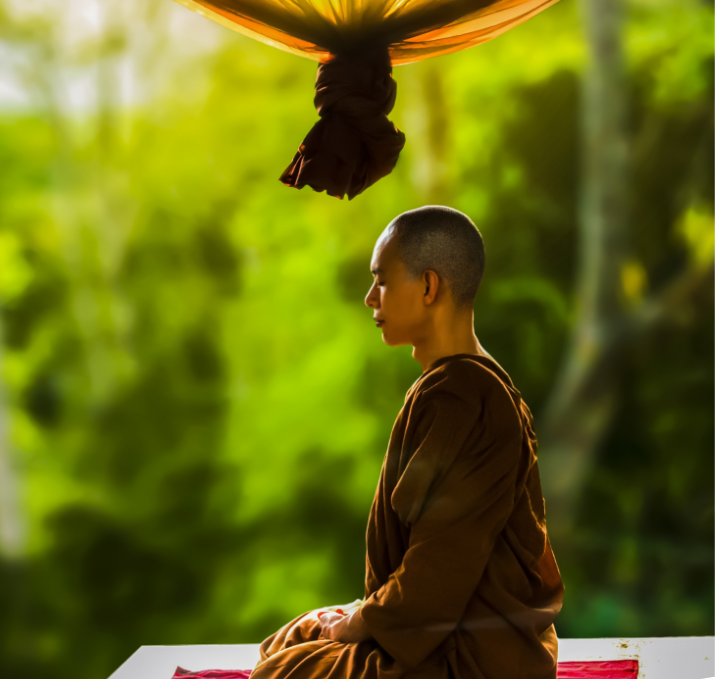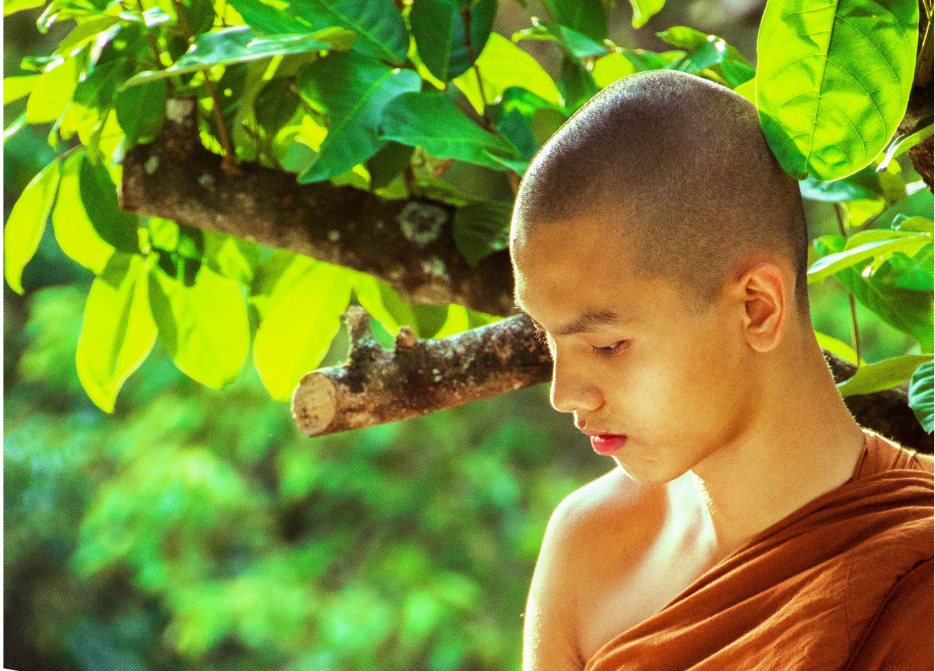Monastic Life

The goal of human life, according to Vedanta, is to realize that, beyond the physical and mental aspects of our life, there is a divine reality, God, as the unchanging, ever blissful spiritual center of our being and who is also at the heart of everything that exists. In order to attain this realization, the various yogas provide different forms of spiritual practice available to everyone, whatever their path in life, to help them toward this goal, while at the same time enabling them to fulfill their obligations and commitments in society.
From very ancient times in India, however–and in some other countries also–there have been spiritual aspirants who have wanted to reach this goal by dedicating themselves to live a purely spiritual life by not entering the family life and by devoting themselves exclusively to dedicated spiritual effort. These are the monks and nuns, in all spiritual traditions, who have chosen this monastic way of life from their youth for their own spiritual enlightenment and for the service of God as the manifest reality everywhere and in everyone.
The path of the monastic involves renouncing family life and adopting vows of celibacy in order to be able to give more energy to focus directly on spiritual practices. Many spiritual traditions have monastics, including the Hindu, Buddhist, and Christian traditions. The nuns and monks of the Vedanta Societies belong to the Ramakrishna Order of India, which was founded by Sri
Ramakrishna in 1886 and organized by his chief disciple, Swami Vivekananda. The members of this order, a part of the ancient monastic traditions of India, dedicate themselves to the twin principles of working toward their own spiritual realization and also to train themselves to promote the higher welfare of others by following the guidance laid down by Sri Ramakrishna, Sri Sarada Devi, and Swami Vivekananda.
Requirements to Become a Monastic

Applicants must be under 35 years of age. The reason for this age limit is that the rigors of community life necessitate a younger person who is more likely to be able to adjust physically and psychologically.
Applicants must have the equivalent of a college degree, and be medically healthy as certified by a medical physical examination. Celibacy and abstinence from alcohol and drugs are required. Applicants should be free of any debts.
The decision to enter the monastic life is not one to be taken lightly. It is not an easy lifestyle. It takes determination, perseverance, and patience with oneself and with others. The experience of community living has been compared to stones rolling around against each other in a rotating drum. You end up being well polished!
Four things are essential in monastic life
Devotion to the sanctity and sacredness of high spiritual ideals
Renunciation of attachment to ordinary enjoyment and sensate values
A spirit of service and humility in relation with others
An unshakable commitment to monastic life
Monastic Routine: Since each person’s spiritual path is different, the details of spiritual practice are worked out in consultation with the Swami who is the head of the Center. The Four Yogas—Karma Yoga, Bhakti Yoga, Jnana Yoga, and Raja Yoga (the paths of action, devotion, philosophical inquiry and meditation) are blended in a combination suitable to each person’s temperament. In our lives we try to work with concentration yet detachment; we strive to meditate, worship, work, and pray with devotion to God; we study, discuss, contemplate the scriptures and we strive to realize our true divine nature by spending time each day in meditation and by striving to be conscious of the divine presence in everything and everyone.


Our monastic routine also involves working on Vedanta Society of Northern California, San Francisco, projects and programs such as maintenance of our facilities and outreach programs, spending time as well in meditation, and study of the scriptures (individual study and attending classes at the center). The work also includes household activities such as cooking and cleaning, as well as maintenance, gardening, temple duties and worship, as well as office & computer work which includes running the monastery, convent and society affairs, operating the bookstore, including the mail-order and catalog section. After being here some time, one may become involved in lecturing, writing, editing and public outreach. We provide a service to the public by sharing the teachings of Vedanta, and serving God through the visitors who come to our centers.
Stages of Monastic Life

There are several stages of monastic life. Initially there is a pre-probationary period. During this period the Vedanta Society provides room and board and facilities for scriptural study and practicing spiritual disciplines in exchange for the work the candidate provides for the Vedanta Society.
The next period is the probationary period which lasts for a minimum of five years. From this point on, the Vedanta Society of Northern California, San Francisco, pays for necessary medical expenses. When the Swami-in-charge of the center feels that the candidate is ready, he or she may take first vows of Brahmacharya (purity of life and renunciation). Then, after a minimum of another five years, the candidate, with the approval of the Swami-in-charge, may be considered eligible for the vows of Sannyasa (final renunciation). Often the time periods are longer.
The primary motivation for choosing monastic life should not be to escape something or avoid something unpleasant. Rather, the aim
should be to move into an atmosphere where we try to direct all thought and all action toward the highest spiritual goal, the realization of God. And it is not a path to avoid being busy.
Work itself, done in a dedicated and selfless manner, becomes one of the monastic disciplines. In addition one must learn to meditate and to study on a regular basis. The main discipline is, though fully busy, to shift our center of interest from that which is impermanent, external and constantly changing to the inner divine reality which never changes.
Ultimately, like everything else, you will get out of the monastic life what you put into it. Those who are successful are those who can give up the more immediate but fleeting pleasures of ordinary life to work wholeheartedly toward the ultimate goal of human existence, God- or Self-realization. The outside world is fraught with many distractions and gives less support to one’s spiritual practice than monastic life. Living in a convent or monastery, one is constantly reminded of the divine nature within and the spiritual ideal everywhere.
CONTACT US:

We recommend that those who are interested in monastic life are especially urged to view on-line classes and lectures from the Vedanta Society of Northern California, San Francisco, to learn more about Vedanta Philosophy and its application to daily life.
Serious inquiries about monastic life should be directed in an email to Swami Tattwamayananda, the Minister-in-charge, at [email protected], with a request to him for an in-person interview as the initial step. After this interview, the Swami will decide, in his judgment, considering relevant factors, what further steps can be taken.

 Streaming
Streaming